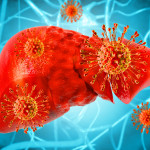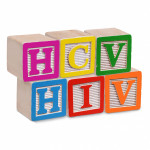The newly unrestricted availability of hepatitis C virus (HCV) treatments in the Netherlands appears to have swiftly cut in half the rate of new infections of the virus among HIV-positive men who have sex with men (MSM), aidsmap reports.
Since about the turn of the millennium, an epidemic of sexually transmitted HCV has emerged among HIV-positive MSM in Western nations. While widespread treatment of hep C would likely combat such transmission of the virus, the high cost of the new therapies has led many payers to instigate restrictions on who can receive them, prioritizing those with more advanced liver disease.
In November 2015, the Netherlands lifted all such restrictions on the coverage of hep C treatments.
To measure the effects of this policy shift, researchers studied data on 22,042 HIV-positive people in the Dutch ATHENA cohort, an ongoing study of people who have been in care for HIV since 1998. They presented their findings at the 2017 Conference on Retroviruses and Opportunistic Infections (CROI) in Seattle.
The study cohort members had been tested at least once for HCV. A total of 2,422 of them had both HCV and HIV; of that group 1,420 remained in care.
Two thirds of the HCV/HIV-positive people in care were MSM and 16 percent reported a history of injection drug use. More than 90 percent of them were on antiretroviral (ARV) treatment for HIV and had a fully suppressed HIV viral load.
By May 2016, 78 percent of those in care for HCV had at least begun treatment for the virus, either with interferon-based therapy or direct-acting antivirals (DAAs); 65 percent had achieved a sustained virologic response 12 weeks after completing therapy (SVR12, considered a cure) or were still undergoing hep C therapy. By January 2017, the corresponding respective figures were 82 percent and 70 percent. At this point, 76 percent of HCV/HIV-coinfected MSM had been cured of hep C or were still on treatment for that virus, compared with 45 percent of other coinfected individuals.
The researchers also analyzed data from 17 HIV treatment centers in the Netherlands, which collectively care for about 80 percent of Dutch MSM receiving care for HIV. In 2014, there were 93 percent new (acute) HCV infections among these men, for a rate of 1.12 percent per year of follow-up. In 2016, these men experienced only 49 new infections, for a rate of 0.55 percent per year of follow-up, a 51 percent drop.
It is unlikely that the drop in new HCV infections among HIV-positive MSM was a result of a sudden rise in safer sex practices, since new syphilis diagnoses rose 41 percent among this population during the same period.
To read the aidsmap article, click here.
To read the conference abstract, click here.
To view a webcast of the conference presentation, click here.






Comments
Comments